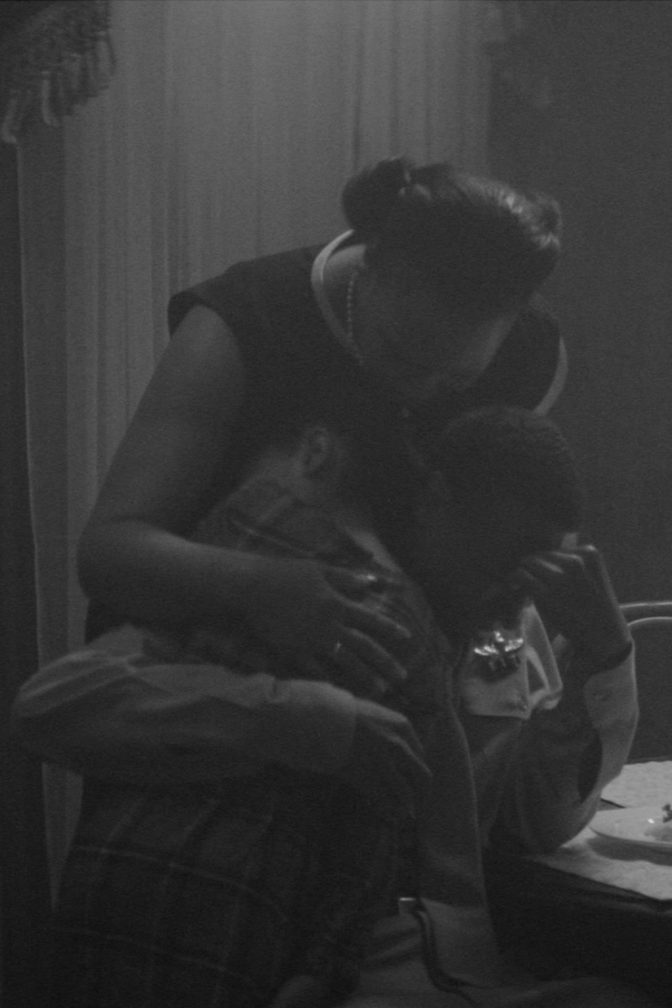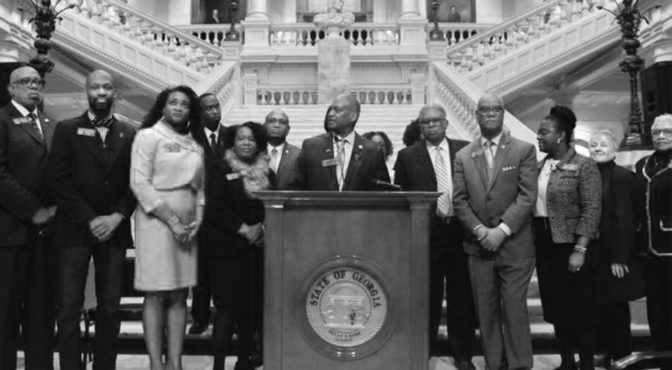CIVIL RIGHTS EXHIBIT
An interactive exhibit at the Georgia State Capitol museum,
created in cooperation with the National Center for Civil and Human Rights.
Voting Rights and Civic Engagement Display


Members of the Georgia legislature, media and the public, as well as notable officials and guests, gathered Jan. 17, 2020 to honor the legacy of Dr. Martin Luther King, Jr. at the 35th annual state commemoration.
Unveiled at the event was an interactive exhibit covering voting and civil rights in the 20s, 40s, and 60s. It specifically targets school children, to educate them about the progress in human rights, encourage them to take human rights personally, and inspire them to become a positive part of history moving forward.
Women's Voting Rights
Before 1919, women did not have the right to vote in the United States. Beginning in the mid 1800s, many brave and determined women worked to earn suffrage, the right to vote in political elections. Two sisters from DeKalb County, Georgia Mary and Rebecca Latimer were very important figures in the suffragette movement. They organized demonstrations, and wrote about how voting rights would open doors for other rights denied to women. In 1919, Congress approved the 19th Amendment to the US Constitution, which gave voting rights to women. It was not a complete victory however, as the 19th amendment only gave voting rights to white women.
"Jim Crow" laws made it impossible for many African Americans to vote.
In the 1940s, Georgia still had “Jim Crow” laws that made it hard to impossible for many African Americans to vote. After World War II ended, governments around the world came together in 1945 to form the United Nations (UN), to protect people from dictators and unfair rulers. Former First Lady Eleanor Roosevelt was the chair of the UN Commission on Human Rights. She led the process to create a document that spelled out the rights and freedoms for all people the world over. This document is called The Universal Declaration of Human Rights, or UDHR. Article 21 of the UDHR says that everyone has a right to vote and that every vote should count the same. While it was not legally binding, this document set the stage for human rights and voting advancements.
The Voting Rights Act of 1965
After Reconstruction ended in 1877 until the 1960s, many states including Georgia implemented poll taxes, literary tests, grandfather clauses and other unfair policies that made it hard for African Americans to vote. Voting rights became central to the American Civil Rights Movement of the 1950’s and 60’s. Dr. Martin Luther King, Jr. was head of this movement and as a young preacher he delivered a speech called Give Us the Ballot, which urged the government and the President to end voter suppression in the South. During a peaceful march from Selma to Montgomery Alabama led by Georgia’s Dr. King, John Lewis and Hosea Williams, participants marching for voting rights were met by state troopers who attacked them with nightsticks, tear gas and whips after they refused to turn back. That violent incident was a shock to many and prompted President Lyndon B. Johnson to pass the Voting Rights Act of 1965. It gave African Americans their right to vote as guaranteed under the 15th Amendment to the U.S. Constitution.
The event [The 35th Annual MLK Tribute] culminated with the unveiling of an interactive Civil Rights display. Located in the Capitol Museum, the display consists of three 65-inch screens which showcase Georgia’s role in the Civil Rights Movement, women’s suffrage, and more causes spanning from 1920-70.




Contact Us
tbd Design is a creative studio in Atlanta, GA specializing in digital installations for public and private spaces. We are constantly experimenting with new forms of design and technology for clients who want to bring life into their environment. Our intention is to educate and engage, even if just for a couple minutes on a busy day.
